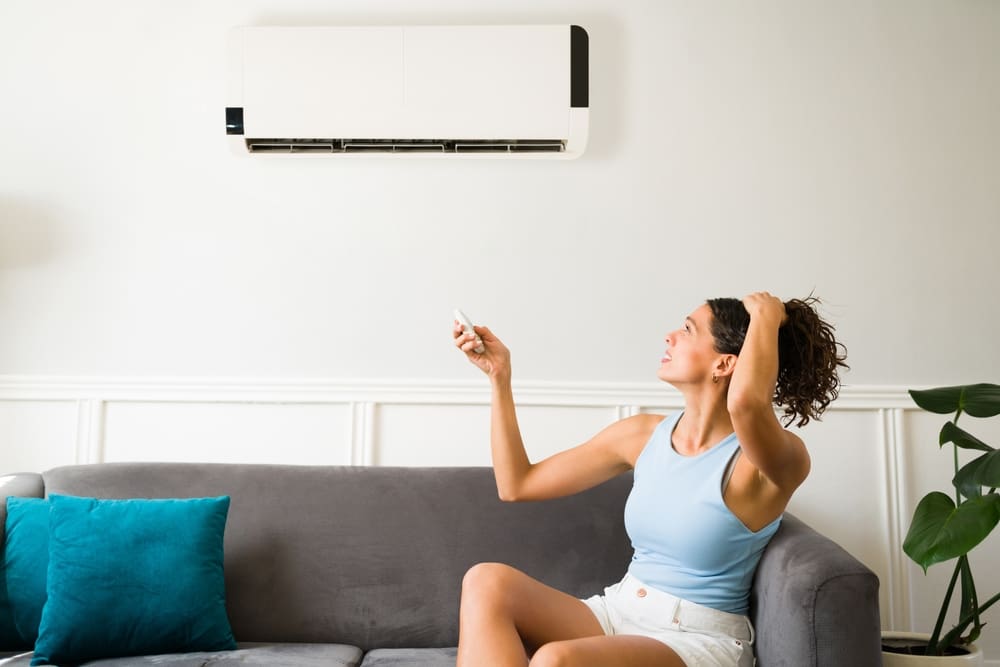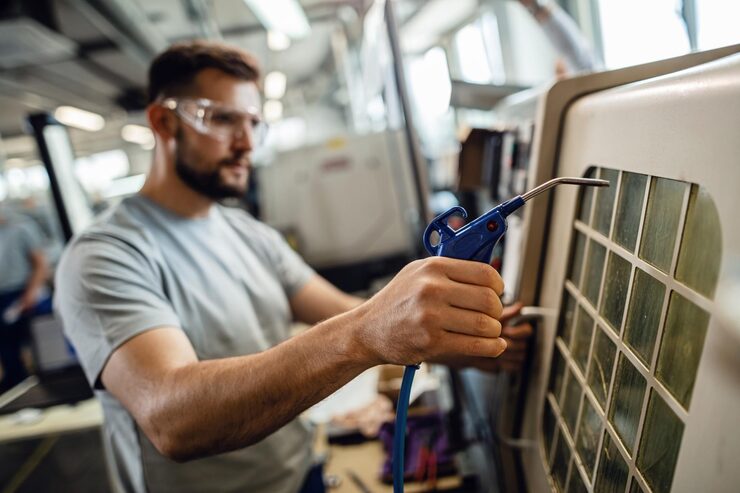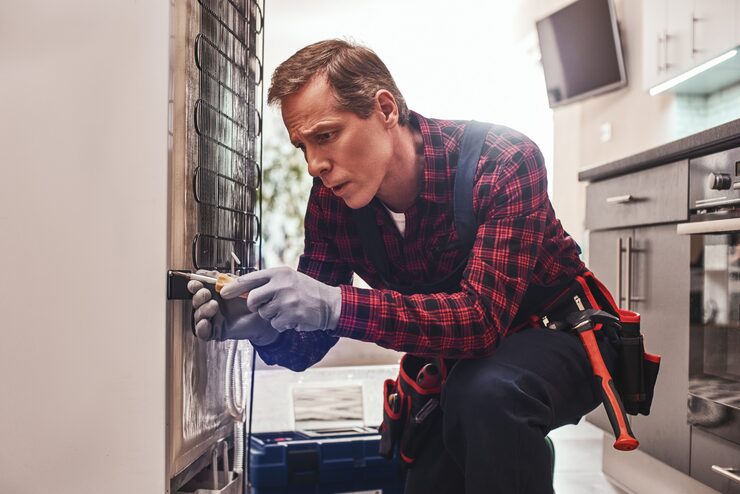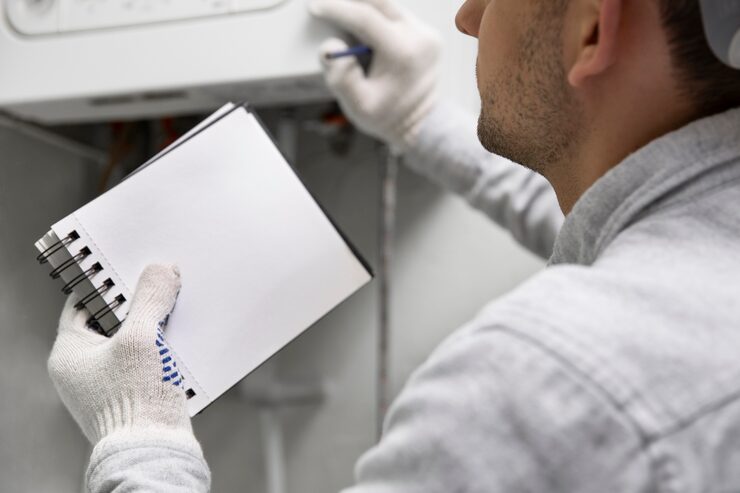The sun is high, the asphalt shimmers, and your home feels like an oasis—until it doesn’t. You adjust the thermostat, expecting a wave of refreshing cool air, but instead, a blast of warm air greets you. In that moment, one thought runs through your mind: Why is my AC blowing warm air? This frustrating scenario is more common than many homeowners realize. During peak summer, HVAC technicians report that warm-air complaints make up over half of their emergency calls.
The reasons range from minor setting mishaps to serious mechanical failures—but the result is the same: discomfort, wasted energy, and potential long-term damage to your system. In this in-depth guide, we’ll break down exactly why your AC might be blowing warm air, how to diagnose the problem, and the solutions—from quick DIY fixes to situations that require professional help. We’ll also cover preventative maintenance tips, benefits of addressing the issue early, and answer the most frequently asked questions on the topic. Keep reading to learn how to restore your AC’s cool comfort before your home turns into a sauna.
How Your Air Conditioner Is Supposed to Work?
Understanding what’s supposed to happen when your AC is on is the first step in figuring out what’s gone wrong. Despite what it might feel like, an air conditioner doesn’t create cold air out of thin air—it moves heat from inside your home to the outside. The process begins when warm indoor air is pulled through return ducts and passes through an air filter that removes dust, pollen, and debris.
This filtered air then flows over the evaporator coil, a network of tubes containing refrigerant in a cold, low-pressure liquid state. The refrigerant absorbs heat and moisture from the air, cooling it down and reducing humidity. The refrigerant, now warmed and in a gaseous state, travels through copper lines to the outdoor unit, where the compressor pressurizes it and sends it into the condenser coil.
A fan blows outside air over the condenser coil, allowing the refrigerant to release the heat it collected from inside your home. The refrigerant cools back into a liquid and returns to the evaporator coil indoors to repeat the cycle. The cooled, dehumidified air is pushed by the blower through the ductwork and out of the supply vents into your living spaces. This cycle repeats until the thermostat senses that the desired temperature has been reached. If any part of this process is interrupted—whether it’s restricted airflow, low refrigerant, compressor malfunction, or electrical failure—the system can keep running but fail to cool, resulting in warm air from the vents.
Is Your AC Blowing Warm Air? Get Fast, Reliable Help Today!
Don’t wait until your comfort is gone for good. If you need AC Contractor Vaughan call us to restore cool air to your home.
📞 Call Us Now: +1 (647) 967 4911
The 7 Most Common Causes of an AC Blowing Warm Air
1. Incorrect Thermostat Settings
It might sound too simple to be true, but many warm-air service calls end up being nothing more than a thermostat set incorrectly. If your thermostat is accidentally switched to “heat” instead of “cool,” the system will blow warm air by design. If the fan setting is on “ON” instead of “AUTO,” the blower will run constantly, pushing air through the vents even when the AC isn’t actively cooling, which means you’ll feel room-temperature or warm air between cycles. Another possibility is a thermostat calibration issue or a faulty temperature sensor, which can cause the system to misread the indoor temperature and fail to trigger cooling when needed. The fix: check the thermostat mode and fan settings, replace the batteries if the display is dim or unresponsive, and ensure the set temperature is several degrees lower than the current indoor temperature. If your thermostat is older or inaccurate, upgrading to a programmable or smart thermostat can improve accuracy and save energy.
2. Dirty or Clogged Air Filters
Your air filter plays a critical role in keeping dust and debris out of your HVAC system, but when it becomes clogged, it restricts airflow. Poor airflow means the evaporator coil can’t absorb enough heat from the air passing over it, which reduces cooling efficiency and can even cause the coil to freeze. A frozen coil blocks airflow entirely, and when that happens, you’ll get warm air from the vents. Checking and replacing the air filter is one of the easiest and most affordable fixes. During heavy use, inspect the filter monthly and replace it every 1–3 months, more often if you have pets or live in a dusty area. Choosing a quality pleated filter can improve both airflow and indoor air quality.
3. Refrigerant Leaks or Low Levels
Refrigerant is the substance that carries heat from inside your home to the outside. Low refrigerant levels mean your system can’t absorb enough heat, so the air coming out of your vents stays warm. Since refrigerant doesn’t get used up like fuel, low levels usually mean there’s a leak. Signs of a refrigerant leak include hissing or bubbling sounds near the refrigerant lines, ice buildup on the evaporator coil, and a noticeable drop in cooling performance. This is not a DIY fix—handling refrigerant requires EPA certification, and the leak must be located and sealed before the system is recharged. Running your AC with low refrigerant can cause the compressor to overheat and fail, leading to one of the most expensive repairs in HVAC.
4. Frozen Evaporator Coil
The evaporator coil is where the cooling magic happens, but if it freezes over, it can’t absorb heat from the air. This problem is often caused by restricted airflow from a dirty filter, blocked return vents, or low refrigerant. When ice builds up, it insulates the coil, stopping heat transfer entirely. Symptoms include weak or no airflow, warm air from vents, water pooling near the indoor unit, and visible ice on the coil or refrigerant lines. The first step is to turn off the AC and let the ice melt naturally—never chip it off, as you can damage the coil. Then, address the root cause to prevent it from freezing again.
5. Compressor Problems
The compressor is the heart of your air conditioning system, pumping refrigerant between the indoor and outdoor units. If it fails, the cooling process stops completely. Compressor problems can be caused by electrical issues, refrigerant imbalances, overheating, or simple wear and tear after years of use. Signs include the outdoor unit not running, loud grinding or rattling noises, tripped breakers, or warm air despite the system being on. Because the compressor is one of the most expensive components to replace, deciding whether to repair or replace it often depends on the age and condition of your system.
6. Electrical or Wiring Issues
Sometimes the issue is electrical rather than mechanical. A tripped breaker, blown fuse, or failed capacitor can stop the compressor or condenser fan from running while the indoor blower keeps operating, which means you’ll feel warm air. You can check your breaker panel and reset any tripped breakers, but if the breaker trips again, call a professional—there may be a deeper electrical issue that needs safe, expert handling.
7. Blocked or Dirty Condenser Unit
Your outdoor condenser unit is responsible for releasing heat absorbed from inside your home. If it’s blocked by debris, surrounded by overgrown plants, or coated in dirt, it can’t do its job effectively. This causes the refrigerant to return indoors still warm, which results in warm air from the vents. Keeping a clear two-to-three-foot area around the unit and gently rinsing the coils with a garden hose once or twice a year can help maintain efficiency. For deeper cleaning, schedule professional maintenance.
Step-by-Step Troubleshooting Guide
When your air conditioner is blowing warm air, the first thing you need is a logical process for finding the cause. A methodical approach prevents you from missing simple fixes and helps you identify when professional service is required. Start with the easiest checks and move toward the more complex.
Step 1: Check your thermostat. Make sure it’s set to “cool” and the fan is on “auto,” not “on.” Verify that the temperature setting is several degrees lower than the current indoor temperature. If the display is blank or dim, replace the batteries. For older thermostats, consider whether the unit might be out of calibration; if you suspect inaccurate readings, an upgrade to a programmable or smart thermostat can solve future problems and improve efficiency.
Step 2: Inspect the air filter. A clogged filter is one of the most common culprits for airflow restriction and coil freezing. Pull the filter out and hold it up to the light; if you can’t see light passing through, it’s time for a replacement. A dirty filter not only causes warm air issues but also forces your system to work harder, raising your electricity bill.
Step 3: Examine the outdoor condenser unit. Is it running? Is the fan spinning? Look for obvious blockages like leaves, grass clippings, or debris lodged in the fins. If it’s dirty, gently rinse it with a garden hose from the inside out, taking care not to bend the delicate fins. Ensure that there’s at least two to three feet of clearance around the unit for proper airflow.
Step 4: Check for ice buildup. Turn off the system and open the access panel to the evaporator coil if you can. Ice on the coil or refrigerant lines indicates a problem—often low refrigerant or restricted airflow. Allow the ice to melt completely before restarting the system.
Step 5: Listen to the outdoor unit. If it’s silent when the thermostat calls for cooling, the problem may be electrical or related to the compressor. Odd noises like grinding, buzzing, or clicking can signal motor or component issues.
Step 6: Inspect your breaker panel. If the breaker for your AC system is tripped, reset it once. If it trips again, stop and call a professional; repeated tripping points to an underlying electrical fault.
Step 7: Evaluate airflow from vents. Weak airflow can indicate duct blockages, blower motor issues, or significant coil icing. Document what you find during each step; this information will be valuable for a technician if you need to call one.
When to DIY vs. Call a Professional
Not every warm air problem requires professional service, but knowing your limits can prevent costly mistakes and protect your safety. Appropriate DIY fixes include checking and adjusting thermostat settings, replacing air filters, clearing debris from around the condenser, resetting a tripped breaker once, and thawing a frozen coil by turning the system off. These actions are low-risk and often solve the problem quickly. However, there are situations where a professional is the only safe choice. Refrigerant issues, for example, require specialized tools, leak detection skills, and EPA certification to handle chemicals legally and safely. Compressor failures, electrical faults, and persistent coil freezing also demand professional diagnosis to avoid further damage. If you’ve worked through the basic troubleshooting steps without solving the problem, or if the system shows signs of significant wear, unusual noises, or electrical hazards, it’s time to schedule a service call. Remember, attempting complex repairs without the right training can void warranties, cause further damage, and even pose safety hazards.
Prevention Tips & Seasonal Maintenance Plan
Preventing warm air issues is far more cost-effective than repairing them. Start with a regular filter replacement schedule—every one to three months depending on usage, pets, and indoor air quality. Schedule a professional tune-up at least once a year, ideally in the spring before cooling season begins. During a tune-up, a technician will inspect and clean the coils, check refrigerant levels, tighten electrical connections, lubricate moving parts, and test system performance. Keep your outdoor condenser unit clear of debris year-round, trimming plants and shrubs to maintain at least two feet of clearance. Inside your home, make sure supply and return vents are unblocked by furniture or drapes to ensure proper airflow. For added efficiency, seal any leaks in your ductwork and consider adding insulation to ducts in unconditioned spaces. Monitor your energy bills; a sudden unexplained increase can be a sign that your system is working harder than it should. In winter, cover the top of your outdoor unit with a breathable cover to protect it from falling debris but leave the sides open for airflow to prevent moisture buildup.
Cost & Consequences of Ignoring Warm Air Issues
Ignoring warm air from your AC can have financial and comfort-related consequences. Running your system while it’s struggling to cool can increase your energy bill by 20–40% depending on the severity of the issue. Prolonged operation under stress can lead to the failure of major components like the compressor, which can cost $1,200–$2,500 to replace. Refrigerant leaks left unaddressed can damage the compressor and coils, adding thousands to your repair bill. Electrical faults can escalate into safety hazards, including the risk of fire. Beyond costs, your home’s comfort and indoor air quality suffer—humidity levels may rise, making the air feel sticky and encouraging mold growth. Addressing warm air issues promptly avoids these risks, keeps repair costs down, and extends the lifespan of your system.
Sum Up
When your AC is blowing warm air, it’s more than just an inconvenience—it’s a sign that something in your system needs attention. Whether it’s a simple thermostat adjustment, a clogged filter, or a more serious issue like low refrigerant or a failing compressor, the key is to act quickly. By following the troubleshooting steps in this guide, you can solve many common problems yourself and know when it’s time to call in a professional. Preventative maintenance, timely repairs, and awareness of your system’s condition can keep your home cool, your energy bills in check, and your AC running efficiently for years. Don’t let warm air take over your summer—schedule your AC service today and get back to enjoying the comfort you deserve.
FAQs
1. My air conditioner isn’t cooling even when the fan runs—what gives?
This typically points to low refrigerant, a frozen coil, or compressor trouble. It’s best to combine basic checks (filter, thermostat) with professional help for diagnostics.
2. Why is my AC not blowing cold air, but the fan works perfectly?
The fan only circulates air—if it’s warm, the problem lies in the cooling cycle: evaporator coil, refrigerant, or compressor issues may be at play.
3. Can a dirty filter cause an AC to blow warm air?
Absolutely! A clogged filter chokes airflow, leading to inefficient heat exchange and potentially frozen coils. Routine filter changes (every 1–3 months) are essential.
4. How do I tell if my evaporator coil is frozen?
Signs include visible ice buildup, reduced airflow, or sputtering cold air. If found, turn off the system, let ice thaw, restart, and monitor. Repeat freeze-ups call for professional assessment.
5. How often should I schedule AC maintenance?
Once a year—ideally in spring before heavy use—is the industry-standard recommendation. If you notice airflow issues or odd noises, schedule it sooner to prevent warm air surprises.
6. Does low refrigerant always mean a leak?
Yes—because refrigerant is a sealed system; losing it indicates a leak. Only certified technicians should handle repairs and recharge due to environmental and safety regulations.
7. At what point should I replace my AC instead of repairing it?
If your system is over 10–15 years old, or if the repair costs exceed 50% of replacement price, consider investing in a modern, energy-efficient system—particularly if breakdowns happen frequently.






 by Canada Create Agency. All Roghts Reserved By SANO HEATING LTD.
by Canada Create Agency. All Roghts Reserved By SANO HEATING LTD.